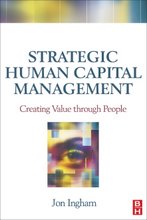
For G4S, social recruiting is an aspect of their direct resourcing strategy which supports their EVP / employer brand (on the slide). It has the widest reach for the biggest gains – but also the biggest threats – in terms of perception, bad behaviour and bad experience. They therefore have developed a strategic, managed and engaged approach – moving slowly and communicating to the business. They’ve seen some of their competitors engage in discussions and leave them open – Colin wanted to avoid this at G4S.
So they’re on Linkedin, Twitter and Facebook but the key thing they’re doing is listening.
They’re looking at social media to solve some major challenges – one is scale – as the world’s second largest private sector employer. The division of the organisation into businesses, countries, divisions etc doesn’t make things any easier, particularly in a decentralised organisation. And its multilingual – including 30 different languages across their recruitment site properties.
So they needed technologies to be able to handle all this complexity. To do this , they got their A team of technology vendors in the same room to design an approach
- Talent on View providing the front end / gateway
- Kaonix / Burning Glass providing CV parsing technology to ensure the best candidate experience, even across different ATS’s
- One of preferred the preferred ATS’s, RecruitActive
- Monster TMS

It’s supported by AI and semantic matching for job seekers and hiring managers. Behavioural matching from Talent on View’s community technology enables some behavioural sorting as well.

During 2011 they’re looking at
- Crowdsourcing developments through user suggestions
- Creating a separate environment with clients and peer group companies which they can use to assist job seekers even if the job isn’t with them.
Neat. Well done, Colin and Matt.
Please note, this was a live blog, so apologies if it’s a bit ropey!
- Consulting - Research - Speaking - Training - Writing
- Strategy - Team development - Web 2.0 - Change
- Contact me to create more value for your business
- jon [dot] ingham [at] social [dash] advantage [dot] com
.







































